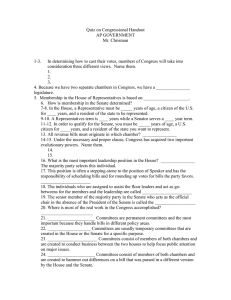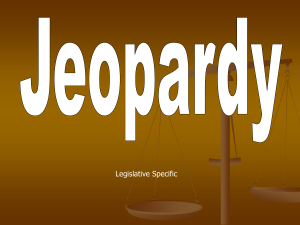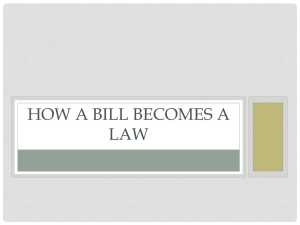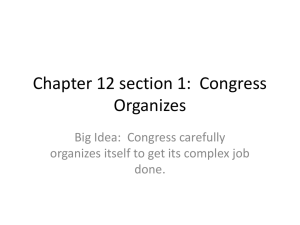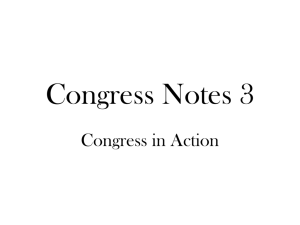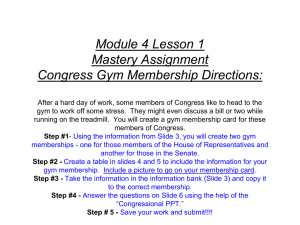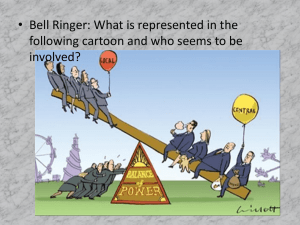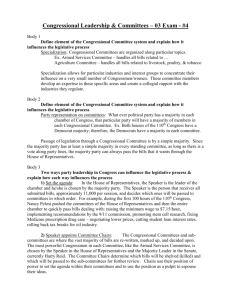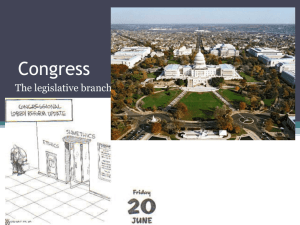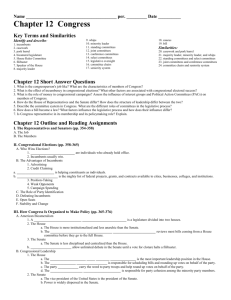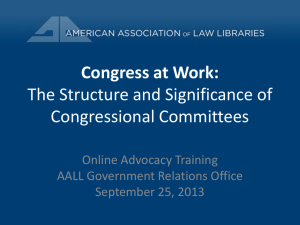Committees - University of Georgia
advertisement
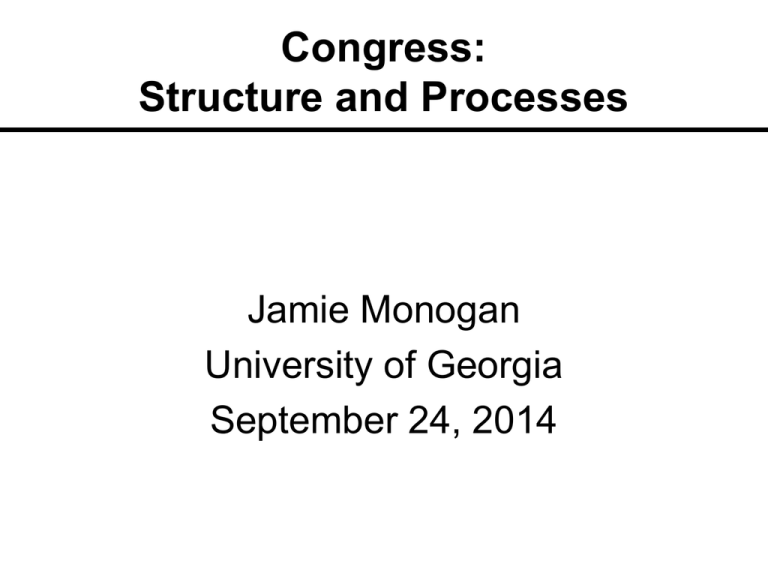
Congress: Structure and Processes Jamie Monogan University of Georgia September 24, 2014 Objectives By the end of this meeting, participants should be able to: • Identify voting rules and organizational structure of Congress. • Explain the basic process of turning a bill into law. Internal Institutions of Congress and Unstable Coalitions • Institutions and procedures of Congress are designed to grant agenda control to a subset of people • Agenda control helps overcome unstable coalition problems and prevent chaos Party Leaders • Party leaders solve coordination and unstable coalition problems by enforcing party discipline • Reed’s Rules provide procedural guidelines for party leaders • Party leaders are elected at the beginning of a Congress by the members of each party: – Speaker of the House – Majority/Minority Leader – Majority/Minority Whip Committees • Much of the detailed legislative work in Congress occurs in committees • Each committee focuses on a particular area of policy (jurisdiction) • Allows for specialization and expertise in committees—so better public policy • Also allows self-selection for members, who may craft legislation, find district benefits, or rise in prestige Types of Committees • Standing committees – Exist permanently • Special/select committees – Formed for a specific purpose • Joint committees – Members of House and Senate, no legislative authority • Conference committees – Members of House and Senate for resolving differences over a bill Committee Membership • Determining committee assignments is a highly political process – Party leaders determine committee assignments, and therefore more loyal members are rewarded • Chairs of committees and chairs of subcommittees are powerful – Agenda setters: Help to resolve unstable coalition issues Other Internal Features • Caucuses, staff, and research services also play a role in Congress • Caucuses are a way for members to group themselves for business • CBO and CRS provide independent information for members The Legislative Process I • Bill proposals: only legislators can introduce bills • Bills referred to proper committee based on jurisdiction and party goals • Committee action – Most bills not acted on in committee – Committees may mark up bills for the floor • House uses special rules to bring bills to the floor – Open rules, closed rules, and restricted rules • Senate uses unanimous consent agreements to bring bills to floor—this empowers individuals Legislative Process II • Floor action can be exciting, though typically wellscripted • Little debate, chambers almost empty • Roll calls in both chambers • Resolving differences between House and Senate bills • Enrolled bills sent to president – Sign, veto, pocket veto, or “pocket sign” • House and Senate can override veto with 2/3 vote of each chamber • Separation of powers system creates bias against action (“institutional friction”) Senate Distinctiveness • Unlimited debate is allowed – Filibuster – Cloture • Committees less powerful – No germaneness rule • Parties less powerful – Individual rights trump collective action in Senate Assignments • For Friday: Read Bullock & Gaddie, Chapter 5 • For Monday: Read Kollman, pp. 185-203

